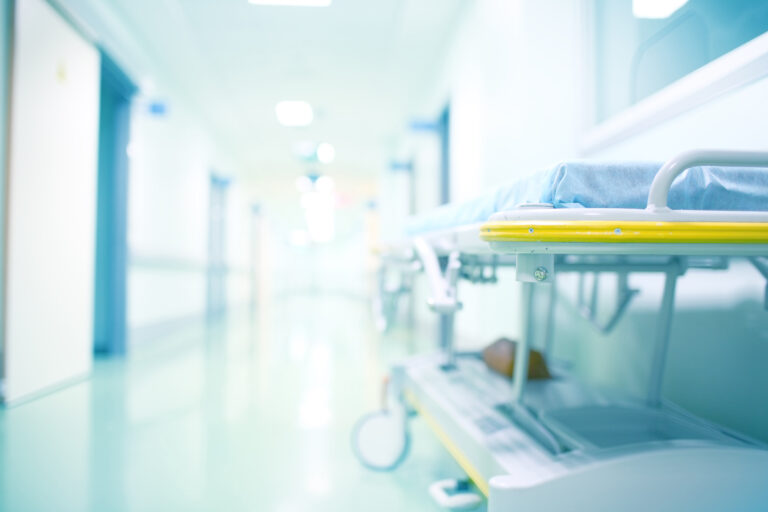
Healthcare is built on the foundation of the Hippocratic oath: first, do no harm. This principle has guided medical decisions for millennia. Informed by thoughtfully planned guidelines and regulatory principles, the healthcare sector is on a continual mission to fulfill this maxim while maximizing healing opportunities for patients.
As technological innovations continue to propel the industry forward, it’s essential to question and reassess these standards to ensure they are helping medical progress and patient outcomes.
By examining several key questions regarding AORN’s environmental cleaning guidelines, we aim to uncover the potential for emerging and hospital-ready technologies to enhance safety and efficiency in perioperative care.
Can spray bottles be used to apply disinfectants in the perioperative area?
AORN’s existing guidelines don’t recommend spraying disinfectants because the practice produces aerosols and risks cross-contamination if the disinfectant is placed in a dirty spray bottle, or is stored in a spray bottle for an extended time.
Instead, AORN recommends pouring disinfectants, rather than spraying, or using ready-to-use disinfectant wipes to combat these challenges. However, these are imperfect solutions as they are both prone to human variability.
Not only are ready-to-use disinfectant wipes less effective than many people think, they’re also difficult to use correctly, generate significant waste, can become more costly over time, and are prone to human error that can reduce their effectiveness.
Perhaps most importantly, the guideline can be misinterpreted, conflating spraying with fogging, a novel, highly effective, and highly efficient disinfection solution.
In fact, Modern HOCl-based products address many of the concerns posed by AORN, including using safe, EPA-certified cleaning products and implementing ready-to-use (RTU) solutions that mitigate cross-contamination.
Do we have to reapply the disinfectant product to a surface if it dries before the designated contact time on the label?
Surface contact time, or the duration a disinfectant needs to remain wet on a surface to eradicate infectious disease effectively, varies significantly depending on the product and pathogen.
This is especially complicated if a disinfectant product dries before the designated contact time on the label is reached. Because contact times are based on continuous wet contact with the surface, suboptimal disinfection may occur if the disinfectant dries before the time listed on the label. As a result, AORN recommends reapplying EPA-registered disinfectants to achieve optimal and patient-focused results.
Fortunately, in 2024, we have a better solution.
For example, Nevoa’s Stratus handheld fogger kills 99.9999 percent of pathogens in just one minute, including Staph, MRSA, and Pseudomonas — the leading causes of healthcare-associated infections (HAIs).
Simply put, fast-acting disinfectants are the way forward and should inform AORN’s future guidelines. New technologies make disseminating these products in safe, efficient, and reliable ways possible.
Is terminal cleaning necessary in preoperative, postoperative and sterile processing areas?
Terminal cleaning of preoperative and postoperative patient care areas and sterile processing areas is a recognized and accepted best practice. In this case, the question isn’t what the best practice should be but how it’s executed.
There are different acceptable routines that can be incorporated to achieve terminal cleans. That’s why decision-makers should be asking the question: “What are the newest products out there that achieve this?”
Since AORN’s guidelines were written, evidence-based research shows that there are more effective and efficient ways to perform these types of terminal cleanings, including automated whole room disinfection technology which we covered in a previous article.
Is Enhanced cleaning the same as terminal cleaning?
Surgical site infections (SSIs) are soaring, adding incredible financial costs and taking an immense human toll on patients and healthcare providers. One risk factor that healthcare providers can absolutely control is the quality of enhanced cleaning following treatment.
For instance, a study published by the National Library of Medicine shows a meaningful link between ineffective cleaning and disinfection practices and subsequent infections. Enhanced cleaning can mitigate this threat.
Understanding that many healthcare providers have limited time and resources to dedicate to enhanced cleaning, now is the right time to talk about implementing solutions that automate or accelerate enhanced cleanings — including advanced disinfection between surgical cases.
Evolving Best Practices For Optimal Patient Care
As AORN prepares to reconsider and revise its guidelines, now is the right time to account for the numerous technological advances that are elevating patient care potential.
Every patient deserves advanced disinfection, and Nevoa is here to help you deliver.
Our whole-room fogging technology is the only patented, hospital-grade surface disinfecting system approved for fogging with EPA-registered hypochlorous acid (HOCl). Contact Nevoa today and let us help you rethink disinfection in your healthcare setting.
